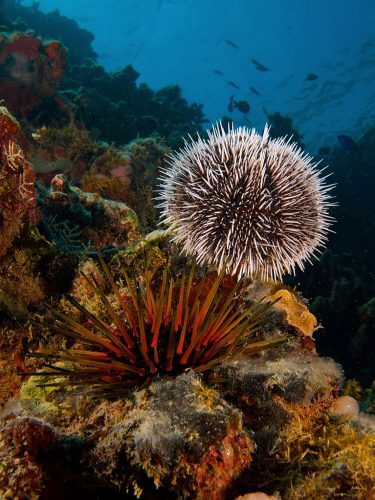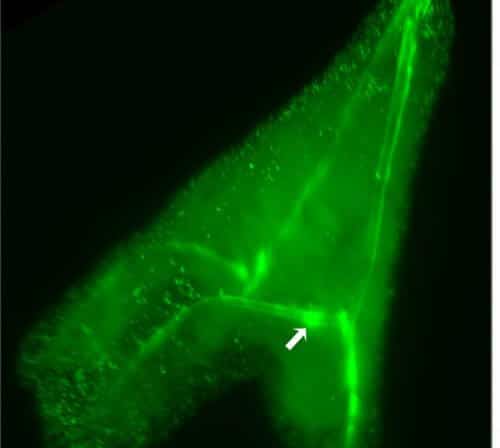Scientists from the Weizmann Institute discovered that embryonic cells of sea urchins "suck" drops of sea water into them, and in this way they introduce the calcium needed to build their spines into their cells. This, contrary to the accepted theory, according to which the cells absorb calcium only through special channels in the cell membrane.

How do sea urchins get the calcium they need to build their spines? This question was at the center of New research Conducted Prof. Leah Eddy וProf. Steve Weiner, from the Department of Structural Biology at the Weizmann Institute of Science, in collaboration with the former research student of the two, Dr. Neta Vidavsky. The finding that emerged from it - that the sea urchins extract the amount of calcium they need directly from the sea water - surprised the scientists. "This discovery may change the way scientists perceive the process of biomineralization (the process in which organisms produce mineral structures, such as the bones of the body)."
In a previous study on sea urchins, the scientists discovered that the urchins build their spines from tiny bundles of "disorganized" mineral, which when placed in place, hardens into a crystal. "Then we took one step back," says Prof. Addi, "and asked ourselves: 'How do sea urchins get the calcium ions they need to create this substance?'" Prof. Weiner adds: "Calcium is found in seawater in low concentrations, so We realized that the method used by the sea urchins to extract the calcium ions from the water must be very effective."
To answer the research question, the scientists needed a technology that would allow them to observe the cells of the hedgehogs "as they are", that is, under conditions as close as possible to their living conditions in the wild. Two people helped them with this: Dr. Andreas Schertel from the German optics company "Karl Zeiss Microscopy", and Dr. Sefi Addi, from the Department of Biological Services at the Weizmann Institute of Science. And so, using innovative microscopic technology that enables XNUMXD imaging of the cells of the embryos, the scientists were able to follow the process of calcium ions entering the cells. "Until a few years ago, we could not carry out such a study", Prof. Addi notes.

When they viewed the pictures, it became clear to the scientists that the cells of the embryos "suck" drops of sea water into them, and in this way they introduce the calcium into the cell. "Contrary to the accepted theory, which states that the cells absorb ions only through special channels in the cell membrane, we discovered that there is another way to introduce calcium into the cell," says Prof. Addi. "In this way, the cells draw water in, and then carry out a manipulation that allows the calcium ions to be 'filtered' and stored in the cell."
The research also revealed that as part of the observed mechanism, the cells of the embryos are filled with networks of "vacuoles", and these store the sea water in their contents. The scientists explain that these networks apparently create a reservoir of calcium used to build the spine, and the inherent advantage of this method is higher energy efficiency. However, they say, "the method also entails problems, as it requires the cell to get rid of ions it does not need, such as sodium and chloride ions."
Prof. Addi and Prof. Weiner emphasize that this is not the first time that it has been found that animals consume calcium ions by pumping seawater. In the previous decade, Prof. Yonatan Erez from the Hebrew University in Jerusalem described the phenomenon as it occurs in single-celled hard-armored microorganisms called "Foraminifera". "At the time, it was common to think that this phenomenon was unusual," say the scientists. "But now, after it has been observed in two completely different creatures, it is possible that it is actually quite common. It's possible that even the cells that make up our bones use a similar method to get the calcium they need."

One response
"In this way, the cells draw water in, and then carry out a manipulation that allows the calcium ions to be 'filtered' and stored in the cell." Because after filtering, non-calcium substances remain - is there evidence of what happens to these substances?
Do you go back out? falling apart?